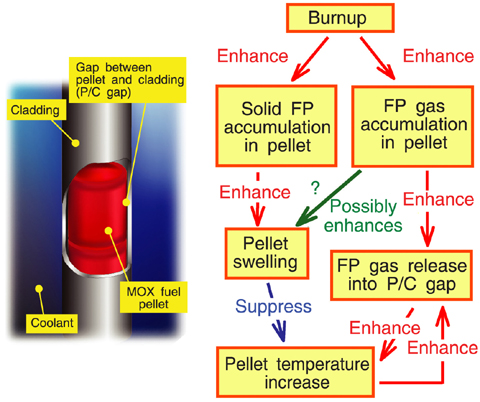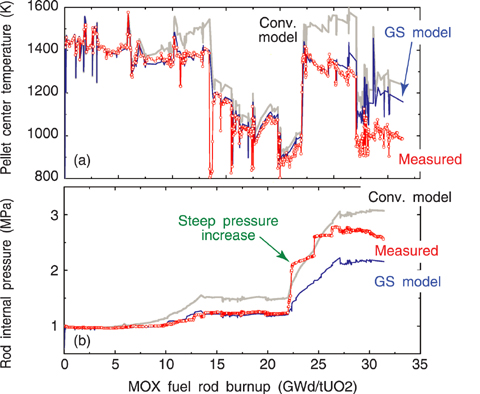
Fig.5-3 Burnup-induced phenomena in a fuel rod

Fig.5-4 Comparison between measurements and calculations
In nuclear reactors, energy is produced via fission reactions of Uranium (U) or Plutonium (Pu) in fuel pellets. This is the so-called "burnup" process. Because a variety of phenomena take place along with burnup, and these interact in a complicated manner as shown in Fig.5-3, computer simulation is indispensable to predict such fuel behavior. We have developed a high burnup fuel behavior analysis code, FEMAXI-6, in order to understand the behavior of high burnup fuels for reliable safety evaluation. As extensive use of U-Pu Mixed Oxide (MOX) fuels in LWRs is planned now, we have improved FEMAXI-6 to achieve more accurate prediction of high burnup MOX fuel behavior.
Some thermal and mechanical property models for MOX pellets were implemented to properly calculate pellet temperature, which is the most important factor influencing total fuel behavior. The next factor to be treated carefully is the effect of fission product (FP) gas which is accumulated inside the pellet grain or at the grain boundary. The latter, intergranular gas bubble growth, can enhance pellet swelling, and for this a new gas-induced swelling model (GS model) was implemented. With the improved version of FEMAXI-6, the behaviors of the MOX fuels irradiated in the Halden (Norway) reactor were analyzed.
Fig.5-4(a) shows changes in pellet center temperature during irradiation. Calculations successfully reproduced the measurement, especially in the GS model calculations. As pellet swelling is enhanced in the GS model, pellets more easily contact the cladding than in the conventional model (Conv. model) which does not consider the gas effect. This P/C contact enhances heat transfer and lowers pellet temperature. The agreement between the GS model and measurement supports the gas-induced swelling theory.
Fig.5-4(b) shows changes in the fuel-rod internal pressure. The steep increase indicates an appreciable FP gas release, which also implies that there was a large accumulation of FP gas at the pellet grain boundary before the sudden release. The deviation of the calculation results from the measurement is, therefore, mainly attributable to underestimation of intergranular FP gas inventory. As such deviation could affect prediction of pellet temperature in higher burnup cases, more accurate treatment of FP gas behavior is needed.
The present improvement enabled more accurate prediction of MOX fuel pellet temperature. A new model to calculate grain boundary FP gas inventory is under development. FEMAXI-6 is an open code and is extensively used for research and safety evaluation. The next release is planned at the end of FY2008 (to be shown at http://www.rist.or.jp/nucis/).